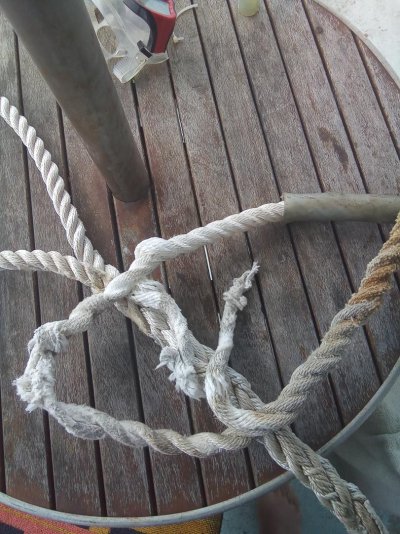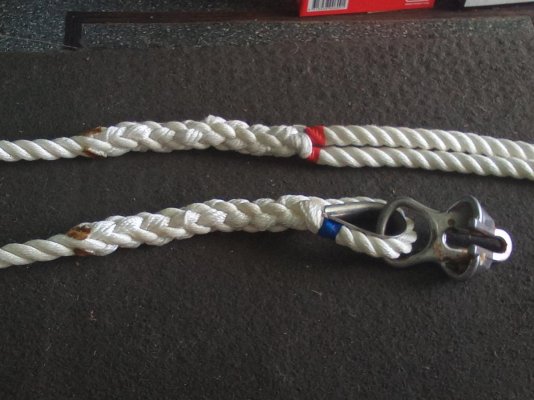Is it nylon that heats up and degrades when there is a lot of stretch cycling? Or is that polyethylene? Could that be what degraded to local area?
For what it is worth, I think stretchability of a snubber is overrated and very hard to calculate. For a given boat, trying to determine just the right diameter of snubber that will stretch but not degrade or break under various wind and wave loads is next to impossible.
The goal is to avoid shock loads at the limits of swing or bucking at anchor. And those shock loads are only an issue under storm conditions. In normal conditions, the lifting of the chain absorbs any shock loads, not the snubber, so there is no need to select a snubber diameter that provides stretch. And one that stretches under normal conditions will degrade rapidly with any conditions above “ normal”.
The desired strength of a storm snubber can be roughly estimated based on an assumed wind speed and boat displacement, etc. But then, one would want to add a safety factor, erring towards not breaking, which would reduce stretch. Sharp bends and splices would all add to reducing the ultimate strength and would need to be added to the equation. So one might select a storm snubber that will stretch at 50 knots, but what will it do if the winds are 70 knots?
Our boat is around 45 tons and we have 7/16” chain and a 1 1/8” 12 plait snubber. Our snubber runs from the deck to a bow eye and then to the chain via a soft shackle. So about 12’ long. I have gone in the water to watch chain and anchor behavior under various wind and depth conditions.
In 10’ of water with 70’ of chain out ( from the end of the snubber, so 7:1) it takes 30 knots of wind or better to lift the chain completely off the sea bed, and then there is still a fair amount of catenary that absorbs the swing of the boat at anchor, so stretch in the snubber would not be a significant benefit.
Recently we sat through a cold front with 50 knots plus for about 10 minutes. We did swing quite a bit, but the snub at the end of each swing was mild and I doubt we ever stretched the chain taught.
I selected 1 1/8” so that even with bends, splices and wear it is still much stronger than the chain. In a choice between ultimate strength and a little stretch ( but not too much) I go for ultimate strength.


